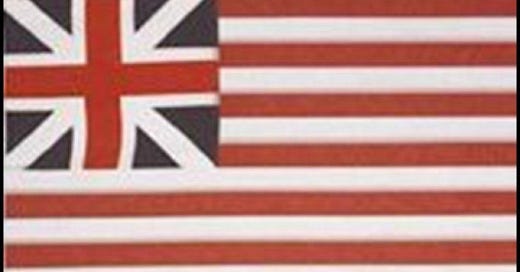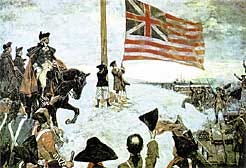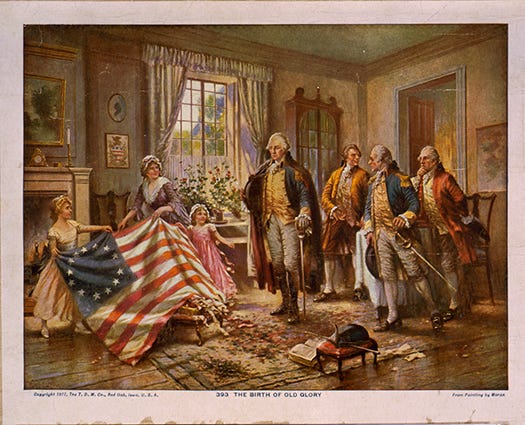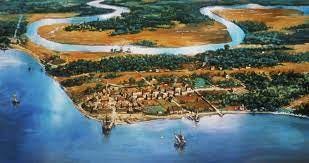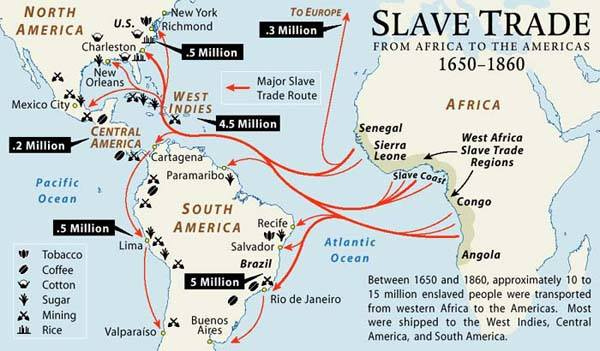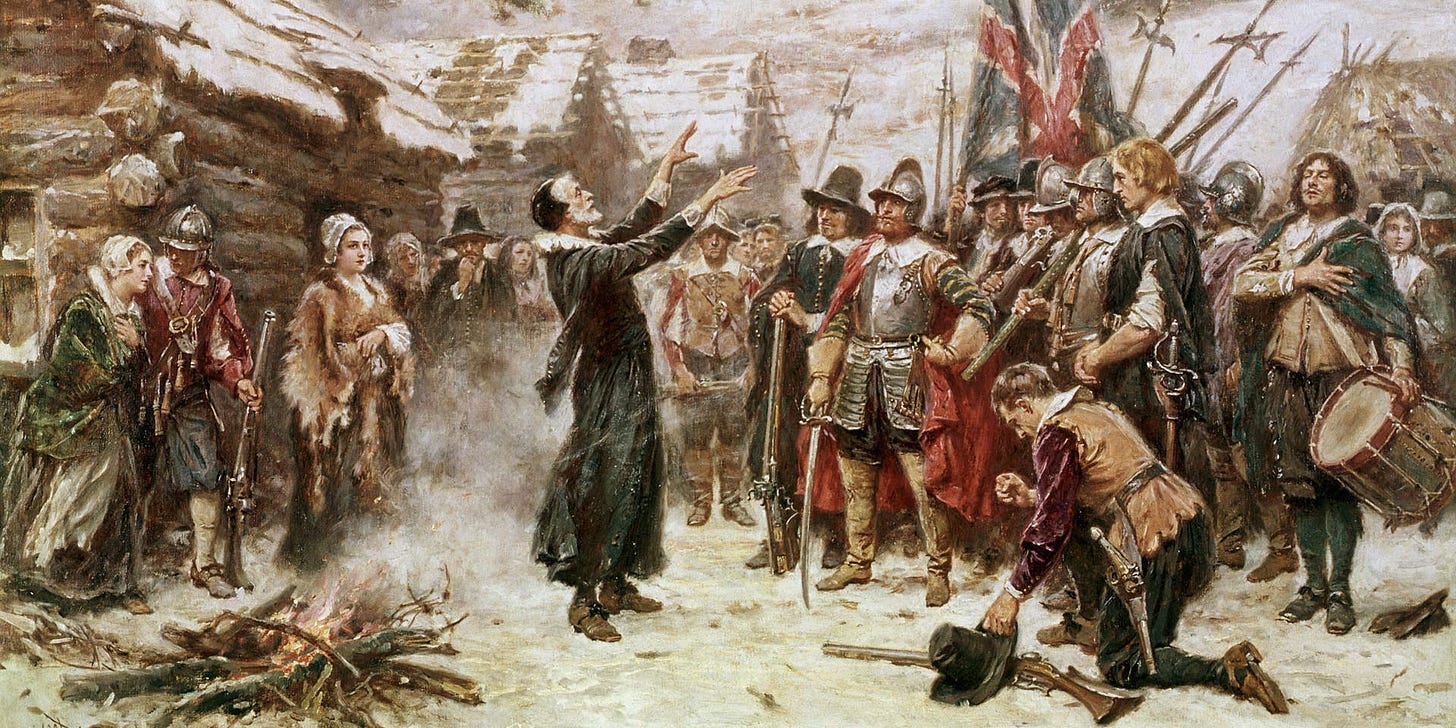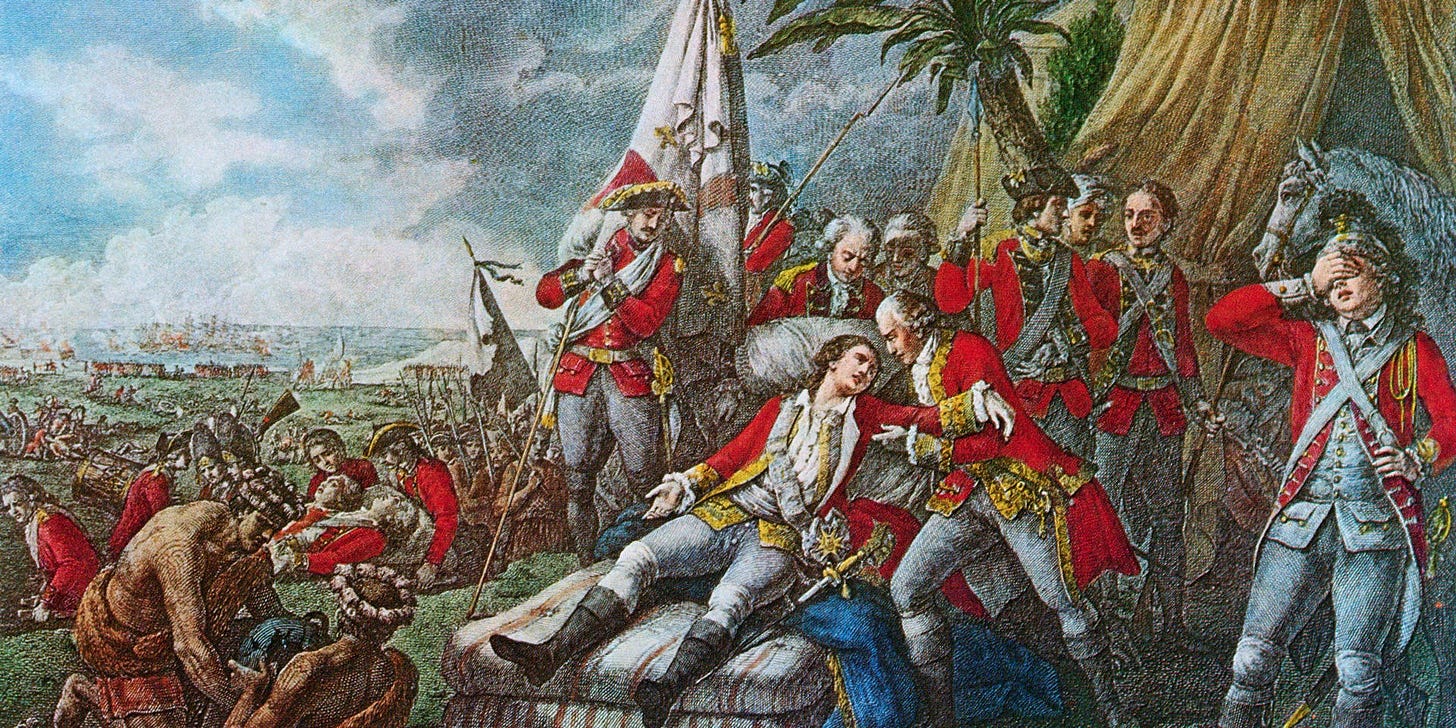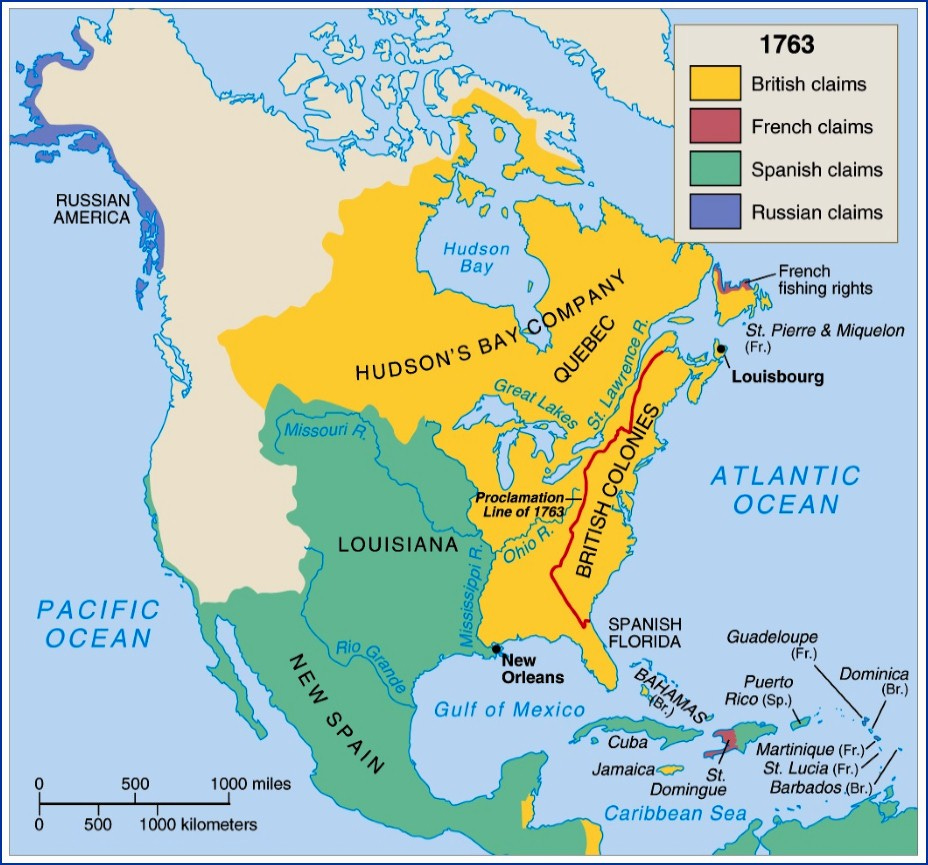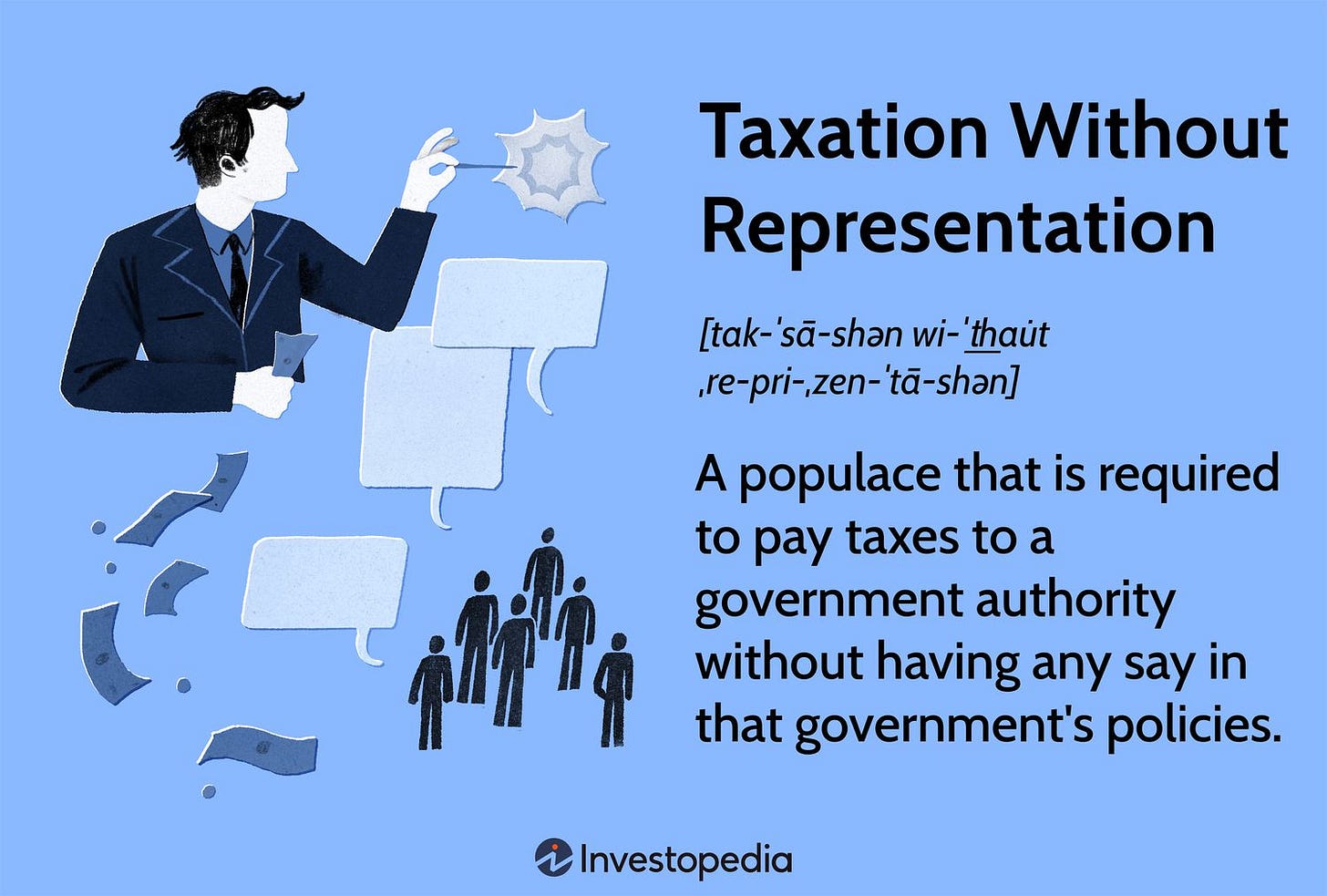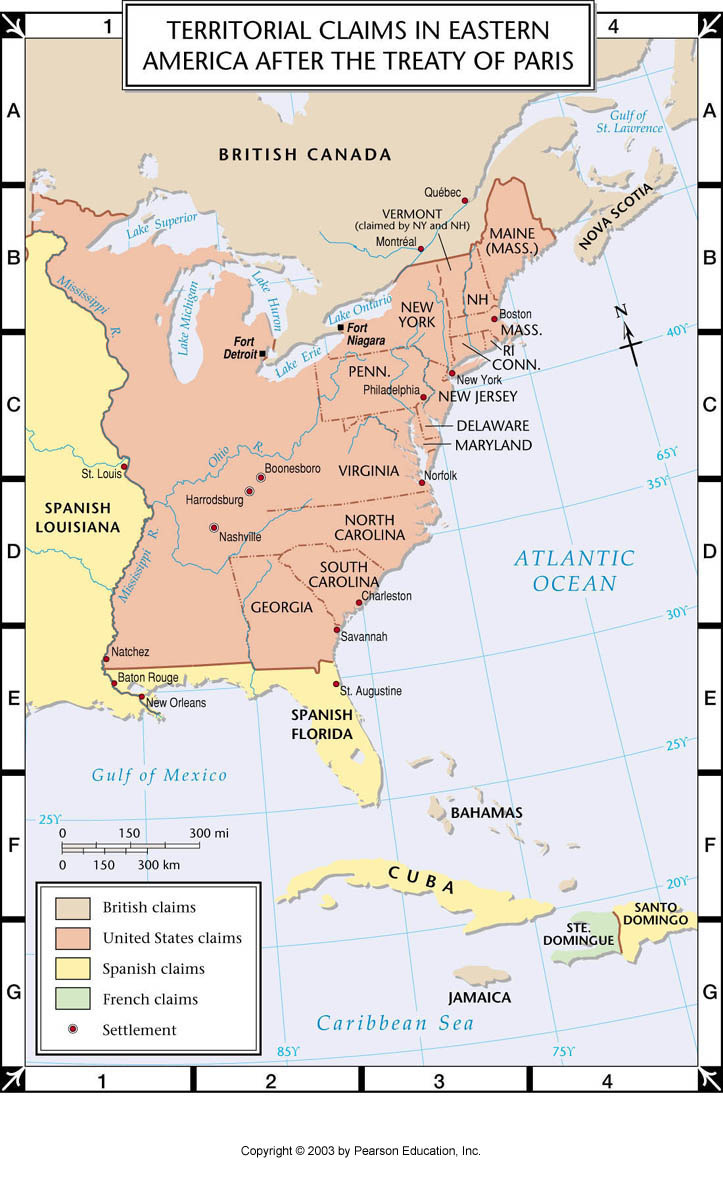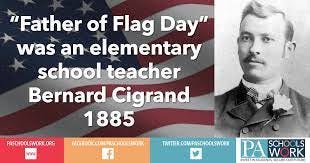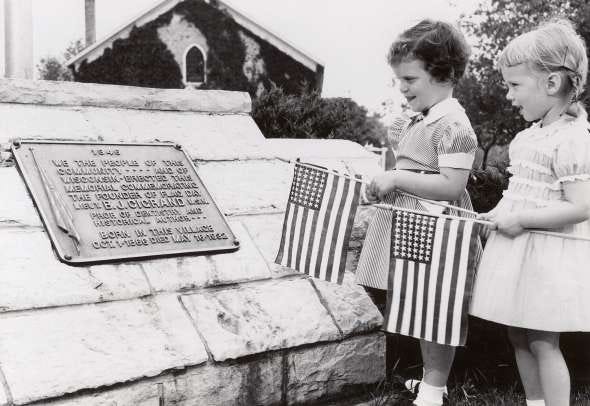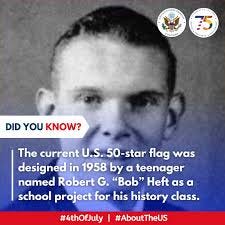June 14th is Flag Day and should be one of the most important celebrations in America!
June 14th is Flag Day. Most Americans don’t even know that – but it is one of the most important days of the year marking the birth of America.
In 1775, the first American flag, called the Continental Colors or the Grand Union Flag, was created by the American colonists. It looked quite similar to the British flag.
In January 1776, the Grand Union Flag was raised at Cambridge by General George Washington and given a salute of 13 guns. The occasion marked the beginning of America's national existence. It still showed the British Union flag of 1606 in the canton. Its field consisted of seven red and six white alternated stripes representing the 13 colonies.
The Grand Union Flag continued to be the flag of the Revolution until the adoption of the Stars and Stripes by an Act of the Continental Congress in 1777.
The Stars and Stripes Flag officially replaced the Grand Union Flag on June 14, 1777, the birthday of the American Flag.
The Second Continental Congress passed a resolution that “the flag of the United States be 13 stripes, alternate red and white” and that the union be 13 stars, white in a blue field, representing a NEW constellation.
The national flag - which became known as the “Stars and Stripes" - was based on the “Grand Union” flag and, according to legend, Philadelphia seamstress Betsy Ross designed the new canton for the Stars and Stripes, allegedly at the request of General George Washington.
On June 14, 1777, Congress made the following resolution: “The flag of the United States shall be thirteen stripes, alternate red and white, with a union of thirteen stars of white on a blue field. . .”
Official announcement of the new flag was not made until September 3, 1777.
Legend has it that Betsy Ross’ famous flag was first flown in battle during the Revolutionary War at the Battle of Cooch’s Bridge in 1777. It was certainly flown during the Mexican War (1846-1848) and the American Civil War (1861-1865.)
With the entrance of new states into the United States after independence, new stripes and stars were added to represent new additions to the Union. In 1818, however, Congress enacted a law stipulating that the 13 original stripes be restored and that only stars be added to represent new states.
On June 14, 1877, the first Flag Day observance was held on the 100th anniversary of the adoption of the Stars and Stripes. As instructed by Congress, the U.S. flag was flown from all public buildings across the country. In the years after the first Flag Day, several states continued to observe the anniversary, and in 1949 Congress officially designated June 14 as Flag Day, a national day of observance.
The week of June 14 is designated as "National Flag Week." During National Flag Week, the president will issue a proclamation "urging the people to observe the day as the anniversary of the adoption on June 14, 1777, by the Continental Congress of the Stars and Stripes as the official flag of the United States of America."
The American Flag itself is a statement of INDEPENDENCE and resistance to TYRANNY from foreign oppressors!
How did Flag Day start? When American colonists decided to fight back against the oppression & taxation of the British Parliament!
England wanted to expand trade around the globe and make more money so it decided to develop new colonies in America as a way to sell more goods and resources to other countries than it bought. In 1606, King James I of England granted a charter to the Virginia Company of London to colonize the American coast. In 1607 the Virginia Company crossed the ocean and established Jamestown.
Between the late 1610s and the American Revolution, the British shipped tens of thousands of convicts and millions of slaves to work in the Americas.
Portugal and Britain were the biggest slave-trading countries in the world - providing about 70% of all Africans transported to the colonies to work. Britain sent some 3 million African slaves to its colonies in the Caribbean, North America and South America from 1610-1807. How did they get them? They paid African leaders to "capture" and enslave their own brothers and sisters and sell them to British slave traders.
Black Muslims, who sold their own, were the WORST and most prolific slavers in history. They enslaved MILLIONS and still traffic and enslave their own in Africa TODAY in open slave markets on the streets.
Among the first documented Africans in British North America were approximately 20 men and women who arrived at Jamestown, Virginia, in 1619. They were seized by private slave traders from a slave ship bound for Mexico and traded in Virginia. The Africans worked the tobacco fields in Jamestown along with white indentured servants. Early Africans were also held as slaves by Native Americans, the original slave traders in North America, who enslaved other tribes as well.
Meanwhile, an important colony was established in America by a group of English Puritans, known today as the Pilgrims. These colonists agreed to come to the Americas to escape poverty, religious persecution, warfare, political turmoil, famine and disease. They believed colonial life offered new opportunities and freedom from the British Crown.
In the early 1750s, France began to attack the American colonies from Canada. The French built Fort Duquesne to rival Britain for control of the continent (in today’s Pittsburgh) – and gained military support from the American Indian population.
During 1754 and 1755, the French & the American Indians won a string of victories against the British colonies in America, even defeating the young General George Washington who would go on to be the first American President!
In 1756 the British formally declared war against the French (marking the official beginning of the Seven Years’ War – otherwise known as the French & Indian War.)
William Pitt, the new British leader, saw the colonial conflicts as the key to building a vast British empire so he borrowed heavily to finance the war, paid Prussia to fight in Europe and reimbursed the colonies for raising troops in North America.
The French and Indian War ended with the signing of the Treaty of Paris in February 1763. The British received Canada from France and Florida from Spain, but permitted France to keep its West Indian sugar islands and gave Louisiana to Spain. The arrangement strengthened the American colonies significantly by removing their European rivals to the north and south and opening the Mississippi Valley to westward expansion.
The British crown borrowed heavily from British and Dutch bankers to bankroll the war, doubling British national debt. King George II argued that since the French and Indian War benefited the colonists by securing their borders, they should contribute to paying down the war debt.
To defend his newly won territory from future attacks, King George II also decided to install permanent British army units in the Americas to control the Colonists.
In 1765, the British Parliament passed the Stamp Act to help pay down the war debt and finance the British army’s presence in the Americas. It was the first internal tax directly levied on American colonists by the British Parliament and was met with strong resistance.
It was followed by the unpopular Townshend Acts and Tea Act, which further incensed the American colonists who believed there should be no taxation without representation. Britain’s increasingly militaristic and dictatorial response to colonial unrest would ultimately lead to the American Revolution.
The Townshend Acts, named after Charles Townshend, British chancellor of the Exchequer, imposed duties on British china, glass, lead, paint, paper and tea imported to the colonies.
Years of unrest and discord followed. The Americans maintained that the British Parliament could make laws, but insisted that only their elected representatives could tax them!
The Declaration of Independence was signed on July 4th, 1776, formally dissolving the colonies' relationship with Britain and plunging the continent into war.
The colonists living in the British North American colonies who rebelled against the authority of the crown were known as patriots, revolutionaries, continentals, colonials, rebels, Yankees, or Whigs.
Those who lived in the colonies and remained faithful to the Crown were known as loyalists, Royalists, King's Men, or Tories.
Great Britain had 8 million residents in 1775, and the 13 colonies had about 2.5 million (of which half a million were slaves).
The majority of the Revolutionary war was fought in New York, New Jersey, and South Carolina, with more than 200 separate skirmishes and battles occurring in each of these three colonies. However, engagements were fought in every one of the original thirteen colonies, with additional military actions taking place in the modern-day states of Tennessee, Arkansas, Indiana, Illinois, Kentucky, Alabama, and Florida.
The British controlled many key cities within the American colonies, with New York serving as its major base of operations for the British for the duration of the war. They also temporarily possessed the cities of Boston and Philadelphia and held Savannah and Charleston until 1782.
While the British held several key urban centers, it’s important to understand that 90% of the colonial population lived in the rural countryside OUTSIDE of British control and influence.
So, the British were only able to maintain power in the BIG CITIES with a strong military presence. The "rebellion" AGAINST the British was formed in the rural areas of the new America!
What were the American Colonists rebelling against? The British Government was forcing the people to pay high taxes without representation, was conducting warrant-less searches and making illegal arrests - without cause - and was demanding that the Colonists turn over their weapons to the British authorities and DISARM. Sound familiar?
As British troops sailed to Boston in 1768, the Boston Gazette reported that the ministry commanded things "more grievous to the people, than any thing hitherto made known," the first of which was "that the inhabitants of this Province are to be disarmed."
By 1774, the British were routinely conducting warrant-less searches and seizures of firearms in the Boston area, leading the Gazette to exclaim that "what most irritated the people next to seizing their arms and ammunition" was the arrest of patriot political leaders. King George III ordered the seizure of any firearms imported into the colonies.
Just after the British attempted to seize the arms of the rebel militia at Lexington and Concord in 1775, British General Thomas Gage ordered all the inhabitants of Boston to turn in their arms at Faneuil Hall for temporary safekeeping. When the people complied, the British troops seized the firearms, never to return them. They lied.
A patriot poet described General Gage's order as saying:
"That whosoe'er keeps gun or pistol, I'll spoil the motion of his systole."
"The Declaration of Causes of Taking Up Arms" passed by the Continental Congress cited General Gage's perfidy in seizing the Bostonians' arms. In fact, the arms seizures were a major cause of the Revolution! History is repeating itself right now!
At its peak, the British Army had upwards of 22,000 men at its disposal in North America to combat the rebellion. An additional 25,000 Loyalists, faithful to Great Britain, participated in the conflict as well.
The American Revolution was a truly global conflict, with battles being fought in North America, the Caribbean, and Europe.
The British were aided by loyal Native American tribes, slaves from Africa and Hessian troops from Germany to fight AGAINST American patriots. Because it was cheaper to hire auxiliary soldiers than muster their own, the British government had also hired professional German troops called Hessians.
More than 30,000 German Hessian soldiers fought on the side of the British. About 20,000 African slaves also fought for the British. Britain courted slaves by offering them false promises of freedom - even though the British were the ones who trafficked them to America in the first place!
In 1763, in order to enlist the American Indian population to fight with the British against the Colonists, the British offered to protect American Indian lands from invasion. Due to that false promise, many Native Americans, including 4 of the 6 tribes of the powerful Iroquois Confederacy, sided with the British at the outbreak of the war.
The fate of many Native American tribes following the American Revolution was a tragic one. Members of the Iroquois Confederacy, along with many other Native Americans, were ravaged by war, weakened significantly due to infighting and disease, and were completely left out of the Treaty of Paris signed in 1783.
Treaties were ignored and years of bloody conflict and expansion all but destroyed the Eastern Tribes.
Throughout the course of the war, about 1% of American colonists fought and died during the Revolutionary War - or the equivalent of roughly 3 MILLION people today.
After the new United States of America defeated the British at Yorktown, and were able to take a large chunk of British holdings in North America in the negotiations. Meanwhile, Spain, who helped the U.S., regained Florida. Here's a map that shows the distribution after 1783:
In the end, a small but DETERMINED group of American colonists fought against the British and their German, American Indian and African slave allies - AND against their own internal American saboteurs - and STILL won their independence - to form the United States of America - that's the REAL story of Flag Day!
From the beginning, Britain believed they would win the Revolutionary War - they believed that the American colonists would pose little challenge. The British called the Americans inferior, stupid, unorganized & cowardly. The Americans had neither a standing army nor a navy and few among them were experienced officers. Britain possessed a professional army and the world’s greatest navy.
Furthermore, the colonists had virtually no history of cooperating with one another, even in the face of danger. The British claimed that the Americans were a “poor species of fighting men” given to “a want of bravery.”
After the Continental Congress convened, King George III told his ministers that “blows must decide” whether the Americans “submit or triumph.”
Confident of Britain’s overwhelming military superiority and hopeful that colonial resistance would collapse after one or two humiliating defeats, Britain chose war.
When the British Army marched out of Boston on April 19, 1775, messengers on horseback, including Boston silversmith Paul Revere, fanned out across New England to raise the alarm. Summoned by church bells, militiamen from countless hamlets rose to the challenge!
Thousands of militiamen arrived in time to fight; 89 men from 23 towns in Massachusetts were killed or wounded on that first day of war, April 19, 1775. By the next morning, Massachusetts had 12 regiments in the field.
Connecticut soon mobilized a force of 6,000, one-quarter of its military-age men. Within a week, 16,000 men from the four New England colonies formed a siege army outside British-occupied Boston. In June, the Continental Congress took over the New England army, creating a national force, the Continental Army.
Thereafter, men throughout America took up arms. It seemed to the British regulars that every able-bodied American male had become a soldier to defend his homeland.
A turning point for the Americans in the war occurred when Congress abandoned one-year enlistments and transformed the Continental Army into a standing army, made up of regulars who volunteered—or were conscripted—for long-term service.
A standing army was contrary to American tradition and was viewed as unacceptable by citizens who understood that history was filled with instances of Generals who had used their armies to gain dictatorial powers.
After the Americans won the Revolutionary War, many British leaders flipped the script and said it was unwinnable from the start!
The Treaty of Paris, signed on September 3, 1783, ratified the American victory and recognized the existence of the new United States.
General Washington, addressing a gathering of soldiers at West Point, told the men that they had secured America’s “independence and sovereignty.” The new nation, he said, faced “enlarged prospects of happiness,” adding that all free Americans could enjoy “personal independence.”
People forget that the American Revolution was a “work in progress.” It evolved from a protest into a full blown revolution and move for independence - and the American flag reflected the various stages of this.
Bernard Cigrand, a small-town Wisconsin teacher, originated the idea for an annual flag day, to be celebrated across the country every June 14, in 1885. That year, he led his school in the first formal observance of the holiday. Cigrand, who later changed careers and practiced dentistry in Illinois, continued to promote his concept and advocate respect for the flag throughout his life.
In the 1950s, when it seemed certain that Alaska would be admitted to the Union, designers began retooling the American flag to add a 49th star to the existing 48. Meanwhile, a 17-year-old Ohio student named Bob Heft borrowed his mother’s sewing machine, disassembled his family’s 48-star flag and stitched on 50 stars in a proportional pattern. He handed in his creation to his history teacher for a class project, explaining that he expected Hawaii would soon achieve statehood as well.
The American flag has stood as a symbol of freedom around the world for over 225 years. Through war and in times of peace, no other symbol captures the power and glory of our nation like the American flag.
The American flag is a living piece of history and should be a source of pride and unity for ALL Americans. It represents the freedom, dignity, and true meaning of being an American.
Please remember that and honor our nation on Flag Day! God Bless America!
